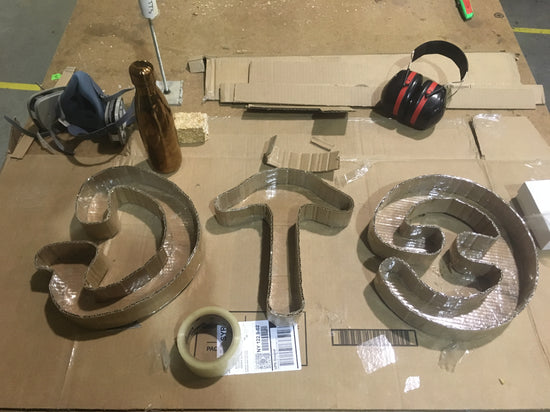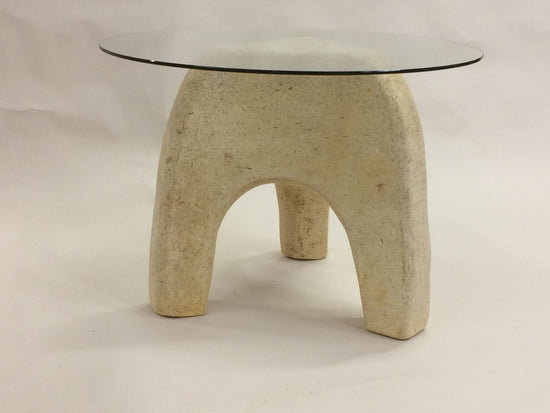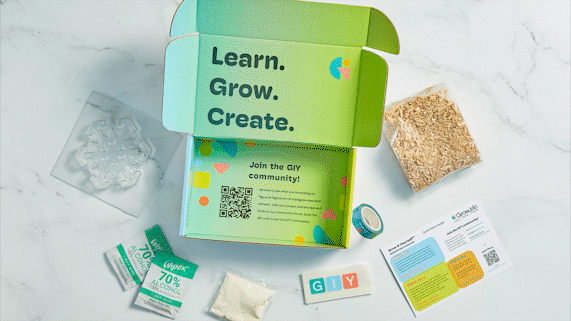Pioneering U.S. Biomaterials Company Collaborating with Leading Synthetic Biology Researches from Columbia University, NYU, and MIT on DARPA Project
Green Island, NY– Ecovative Design has been awarded a contract valued at up to $9.1 million from the Defense Advanced Research Projects Agency (DARPA) to develop next generation building materials: living materials that are more versatile, more efficient, and more cost effective in rapidly creating structures, by literally growing those structures in places where they are needed.
Ecovative, the pioneer and world leader in the design and manufacturing of mycelium-based biomaterials, will work in collaboration with leading researchers in synthetic biology, biochemistry, and systems biology from Columbia University, New York University (NYU), and the Massachusetts Institute of Technology (MIT). This four-year project aims to create these living systems, and to demonstrate that the materials can be manufactured at scale.
The U.S. Department of Defense, of which DARPA is a part, must at times establish shelters or other structures for military or civilian purposes in unfamiliar or under-resourced environments. Imagine a U.S. military unit arriving in a conflict zone, or a humanitarian disaster site, and creating its base of operations by literally growing building materials or the required structures themselves – shelter, barriers, furniture and more. Ecovative envisions a day when U.S. forces will arrive at a location and be able to do just that.
The project is funded via DARPA’s Engineered Living Materials (ELM) program. Launched in August, 2016, its goal is to create a new class of materials that combines the structural properties of traditional building materials with attributes of living systems. Living or biologically produced materials represent a new opportunity to leverage engineered biology to solve existing problems associated with the construction and maintenance of built environments, and to create new capabilities to craft smart infrastructure that dynamically responds to its surroundings.
“The vision of the ELM program is to grow materials on demand where they are needed,” ELM program manager Justin Gallivan said in a statement marking the launch of the initiative in 2016. “Imagine that instead of shipping finished materials, we can ship precursors and rapidly grow them on site using local resources. And, since the materials will be alive, they will be able to respond to changes in their environment and heal themselves in response to damage.”
Ecovative’s research project is designed to demonstrate it is feasible to (1) grow a living hybrid composite building material in the field using locally sourced feedstocks, (2) genetically re-program that living material with responsive functionality (wound repair, protective surfaces, and/or infection response, for example), and (3) rapidly reuse and redeploy material into new shapes, forms, and applications, according to principal investigator and Ecovative Senior Research Scientist, Damen Schaak.
 Ecovative’s Growing Process
Ecovative’s Growing Process
To explore these scientific questions, Ecovative has assembled a team of experts now defining the field:
Columbia University Helena Rubenstein Professor, Departments of Chemistry and Systems Biology, Dr. Virginia Cornishsaid, “We are excited to bring our expertise in chemical and synthetic biology to this collaboration with Ecovative Design. Our team seeks to functionalize the surface of Ecovative Design’s fungal material with an engineered yeast skin that can sense (and respond to) the environment, and enables the material to heal after damage. Like this, we are developing an adaptable living material that challenges the paradigm of traditional building materials."
Columbia University Assistant Professor of Systems Biology in the Department of Systems Biology, Harris Wang, Ph.D. said: “We are very excited to partner with Ecovative to work on this fantastic DARPA program. We look forward to bringing our expertise in microbiome analysis and engineering to this collaborative effort with Ecovative and the other academic partners, to build a unique technology in engineered fungal-bacterial living bio-materials.
MIT Synthetic Biology Center (SBC) co-director, and Professor of Biological Engineering, Christopher A. Voigt, Ph.D. said: “Living cells can function as atomic architects in the construct of functional nanomaterials with a precision impossible using chemistry and materials science. The marriage of synthetic biology and grown materials provides a means to harness this precision engineering at the bulk scale.”
The Institute for Systems Genetics, NYU Langone Medical Center Founding Director, and Professor, Department of Biochemistry and Molecular Pharmacology at NYU, Jef D. Boeke, Ph.D. said: “We are delighted to work with one of the most innovative companies using synthetic biology methods to develop next generation materials that incorporate engineered yeasts in the mix.”
Ecovative has been using biology rather than chemistry to rapidly and sustainably grow products for a decade. In 2006, Ecovative co-founder Eben Bayer (CEO) had the fundamental breakthrough idea that the mycelium of a mushroom can work as “nature’s glue” to bind agriculture salvage and/or wood products together. He teamed up with Gavin McIntyre (chief scientist & co-founder) to turn that idea into a business. Ecovative’s patented mixture of Mushroom® Material composed of non-food agriculture waste and mycelium (mushroom roots), is used to literally grow packaging (for Dell and others), furniture components (for Gunlocke), and its own line of fully grown and Grow-It-Yourself lamps, wall tiles, tables, and other sustainable products for the home and office.
“We have used biology to grow materials with exceptional properties that are simply unattainable through conventional chemistry. We have clearly demonstrated these products can be manufactured at scale. This project will demonstrate what is possible when we start taking advantage of biomaterials most powerful property: life itself,” says Bayer. “These same techniques can be used to develop new housing solutions in conventional architecture, as well as support rapidly deployable relief structures in area’s struck by natural disasters”
“During the last ten years we created a new materials science by demonstrating the versatility of mycelium, in combination with agriculture waste, to create sustainable products with a range of properties and functions,” Ecovative’s Chief Scientist Gavin McIntyre, said. “This next logical step is to determine how to tap the power and potential of a consortia of organisms to create the next generation of advanced, biomaterials. Microbial communities power our bodies and ecosystems, and Ecovative is uniquely positioned to exploit a novel microbiome to propel material science into new frontiers.”
During the next four years Ecovative’s project team will work to create the prototype for a living, responsive, regenerating fungal composite building material that can be shipped across the globe at a tiny fraction of the cost of standard building materials. The material would remain biologically active through its intended usable life, and would retain both its native and engineered living properties. The living materials would grow into feedstocks found on site rather than needing to mill, ship, and assemble lumber or other materials. The goal is that cardboard origami forms, inoculum, a source of water, and a few days will be all that is required in order to establish a self-maintaining, reusable shelter. Used shelters would be able to be broken down to seed new ones, and all without costly additives or problematic waste, according to Schaak.
About Ecovative Design
Ecovative is a leading biomaterials company growing high performance, premium, award-winning products that are safe, healthy, and certified sustainable. Ecovative’s packaging, interiors products, and Grow It Yourself Mushroom® materials enable customers—including Fortune 500 companies - to meet their design, production, and delivery needs while achieving sustainability goals. Founded in 2007, the pioneer and world leader in mycelium-based biomaterials uses biology to grow materials with exceptional properties unattainable through conventional chemistry.




